Timeline
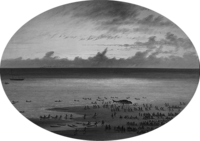
4,200 years ago Aboriginal people settle in Clayoquot Sound.
1774 Spaniard Juan Pérez makes contact with Hesquiahts off Perez Rocks near Estevan Point. He does not land.
1778 Captain James Cook lands at Nootka.
1786 Captain James Hanna becomes first European to enter Clayoquot Sound and trades for pelts at Ahousaht.

1787 Captain Charles William Barkley, accompanied by his wife, Frances, visits Chief Wickaninnish in Clayoquot Sound.
1788 Captain John Meares visits Chief Wickaninnish.
1788 “Boston Men” John Kendrick and Robert Gray arrive at Nootka.
1789 Spanish Captain Esteban José Martínez establishes fort at Nootka.
1789 Martínez seizes British ships at Nootka and imprisons their captains and crews, precipitating the “Nootka Incident.”
1791 Kendrick “buys” a portion of Clayoquot Sound from Chief Wickaninnish.
1791 Robert Gray builds Fort Defiance at Adventure Cove in Lemmens Inlet.
1792 Gray torches Opitsaht village as he departs Clayoquot Sound.
1792 Captain George Vancouver arrives at Nootka to negotiate with the Spanish.
1793 Alexander Mackenzie arrives at the Pacific coast after crossing Canada by land.
1795 The Spanish withdraw from Nootka.
1803 Nuu-chah-nulth attack the trading vessel Boston. John Jewitt and one other crew member are taken captive and held for two years.
1811 Destruction of the trading vessel Tonquin near MacKenzie Beach. Scores of Tla-o-qui-aht and all but one of the crew are killed.
1843 Hudson’s Bay Company establishes Fort Victoria.
1849 Vancouver Island established as a Crown Colony.
1854 William Banfield opens a seasonal trading post at Clayoquot on Stubbs Island.
1858 Fraser River gold rush brings tens of thousands of fortune seekers through Victoria.
1858 British Columbia established as a Crown Colony.
1860 Charles Barrett-Lennard and Napoleon Fitzstubbs circumnavigate Vancouver Island.
1861 Barrett-Lennard and Fitzstubbs briefly work at the Clayoquot trading post with Peter Francis.
1864 James Douglas Warren and the Boscowitz brothers take over the trading post at Clayoquot.
1864Kingfisher attacked and sunk at Ahousaht. Royal Navy gunships HMS Sutlej and HMS Devastation attack villages in Clayoquot Sound, killing 15 Ahousahts.
1866 Colonies of Vancouver Island and British Columbia unite.
1867 United States purchases Alaska from Russia for $7.2 million.
1868 The schooner Favorite launched at Sooke.

1868 Pelagic fur seal hunting begins.
1869John Bright founders near Hesquiaht. Everyone aboard dies. Two Hesquiaht men are accused of murder, stand trial in Victoria in dubious proceedings, and are hanged at Hesquiaht.
1871 British Columbia joins the confederation of Canada.
1874 Father Augustin Brabant and Bishop Charles Seghers make two trips to the west coast, seeking a site for a permanent Roman Catholic mission.
1874 Fred Thornberg installed as manager of J.D. Warren’s trading post at Clayoquot on Stubbs Island.
1875 Father Brabant takes up residence at Hesquiaht and builds the first Catholic church on the west coast.
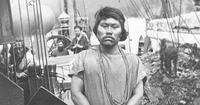
1876 Philadelphia Centennial Exhibition features west coast artifacts including an eighteen-metre-long dugout canoe made for Chief Maquinna of Nootka and sold for one hundred dollars.
1879 J.D. Warren pre-empts first land (25 hectares) in Clayoquot Sound on Stubbs Island.
1881 Harry Guillod becomes first Indian Agent for the West Coast Agency.
1884 Canadian government bans potlatch.
1886 Jacob Gutman and Alexander Frank purchase the Clayoquot store, retaining Thornberg as manager.
1886–89 Indian Reserve Commissioner Peter O’Reilly establishes Indian reserve lands for the Hesquiaht, Ahousaht and Tla-o-qui-aht people of Clayoquot Sound.
1886 SS Maude travels regularly from Victoria to Alberni. Advertisements appear for tourists to travel on the Maude up to Clayoquot.
1887 Sealing schooner Active sinks. Twenty-four Kelsemaht hunters and five white men die.
1889 Penney and Brown buy Clayoquot store.
Early 1890s The first handful of permanent settlers arrive on the Esowista Peninsula.
1890 Post office opens at Clayoquot, with John Penney as first postmaster.
1892 Saltery established at Clayoquot on Stubbs Island, salting down salmon in barrels.
1893 Thomas Earle purchases Clayoquot store from Penney. Filip Jacobsen appointed store manager and postmaster.
1893 John Grice pre-empts Lot 114 Clayoquot District, the site of modern-day Tofino.
1893/94 Thomas Stockham and Walter Dawley establish their store and trading post on Stockham Island.
1894 Norwegian settlers Jacob Arnet,
Thomas Wingen, and Bernt Auseth pre-empt land in Mud Bay on Tofino Inlet. Jens Jensen pre-empts land in what is now Jensen’s Bay.
1895 John Eik and Ole Jacobsen arrive in the area. The following year Eik pre-empts Lot 115 Clayoquot District, adjacent to the Grices’ land.
1894–95 Stockham and Dawley open branch stores at Nootka and Ahousaht.
1895 T.S. Gore surveys all of Esowista Peninsula.

1895 Clayoquot cannery opens.
1896 First May Day celebration at Clayoquot on Stubbs Island to celebrate Queen Victoria’s birthday.

1896 SS Tees makes her first voyage on the west coast. This vessel became a regular on this run, sharing the route with other vessels until 1917.
1896 Rev. John Russell starts Presbyterian mission at Ahousaht, shortly followed by a small day school.
1898 SS Queen City makes her first voyage on the west coast run, a route she would share for many years with SS Tees.
1898 Walter Dawley named mining recorder as mining exploration increases in Clayoquot Sound.
1898 Stockham and Dawley build a hotel on Stockham Island.
1898 Thomas Earle builds a hotel and a large dock at Clayoquot, on Stubbs Island.
1898 A one-room school opens at Schoolhouse Point in Browning Passage, built by local volunteers. Twelve children register in the first year.
1898 Methodist medical missionary, Dr. P.W. Rolston, arrives at Clayoquot.
1899 Port Hughes mining community is established at mouth of the Bedwell (Bear) River.
1899–1901 Gold rush for placer gold at Wreck Bay.
1899 The first attempt of many to build a road—in this case a trail—from Tofino to Ucluelet.
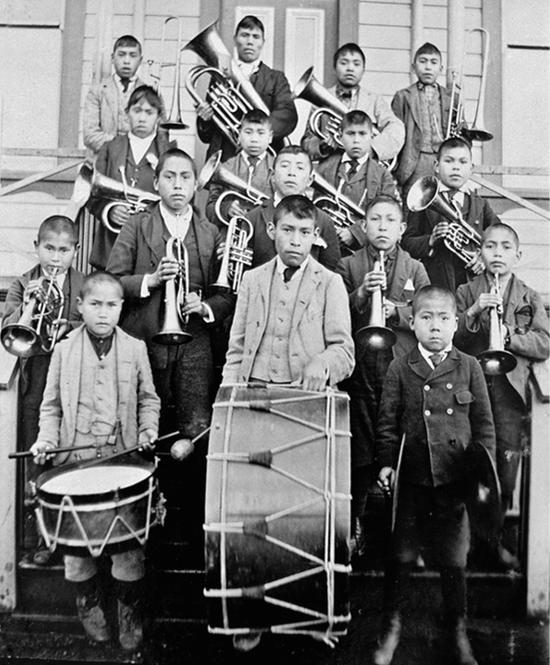
1900 Christie School, the Roman Catholic residential school at Kakawis on Meares Island, opens. Father Maurus Snyder and Father Charles Moser arrive to work in the school and at the Catholic missions.
1900 “Clayoquot Townsite” is surveyed, where Tofino eventually would stand, on land owned by John Grice.
1900Hera sinks in Tofino Harbour.
1900 Harlan Brewster appointed postmaster at Clayoquot.
1900–01 First store opens on the Esowista Peninsula, where Tofino now stands, owned by the Chinese gold seeker Sing Lee.
1902 Stockham and Dawley leave Stockham Island and take over Thomas Earle’s establishment at Clayoquot on Stubbs Island.
1902 Telegraph office opens at Clayoquot, connecting to Alberni.
1904 Presbyterian residential school opens at Ahousaht.
1904 Stockham and Dawley part company acrimoniously. Dawley remains in charge at Clayoquot.
1904 Louisiana Purchase Exposition World’s Fair in St. Louis features exhibits from the west coast. Several Ahousaht people travel to Louisiana for the fair. Handwriting and fancy work from Christie School are displayed.
1904 Francis Garrard becomes the first lighthouse keeper at Lennard Island.
1905 The Sechart whaling station opens in Barkley Sound.
1906 A one-room schoolhouse is built in Tofino by volunteers. Twenty-eight children register in the first year.
1906 The Chinese trader Sing Lee dies. James Sloman and John McKenna purchase his store on the Esowista Peninsula, where Tofino now stands.
November 1906 The large sawmill at Mosquito Harbour on Meares Island begins operating.
1907 A small copper mine opens at Sydney Inlet, where prospectors had been at work for nearly ten years.
1907 The Cachalot whaling station opens in Kyuquot Sound.
1908 First government wharf built at Tofino.
1908 First lifeboat station built at Tofino. Early lifeboats were powered by oars.
1908 First church wedding of an Indigenous couple on the west coast. Chief Napoleon Maquinna marries Josephine, both former Christie School students, at Yuquot.
1908 The Estevan Point lighthouse is built.
1909 First Tofino post office opens and E.B. Garrard is appointed postmaster.
1908 First Clayoquot Hotel burns down.
1910 The Kennedy Lake Hatchery opens.
1911 An international treaty ends pelagic sealing in the Bering Sea.
1911 Father Maurus Snyder leaves after 11 years as Christie School principal.
1911 Railroad connects Port Alberni to Nanaimo and the rest of Vancouver Island.
1911–13 British settlers arrive to take up land, sight unseen, on Vargas Island.
1912 Father Brabant dies in Victoria. Father Charles Moser placed in charge of the Hesquiaht mission.
1913 First gas-powered lifeboat used at the Tofino Lifeboat Station.
1913 SS Princess Maquinna makes her maiden voyage up the west coast. The Tees shares the west coast route with the Maquinna until 1917.
1913 St. Columba Anglican church built at Tofino.
1913 Legislation passed making potlatching a criminal act.
1914 The McKenna-McBride Commission conducts hearings to reassess boundaries of Indian Reserves throughout British Columbia. Nuu-chah-nulth leaders in Clayoquot Sound appeal for more land.
1914 Telegraph line is extended from Clayoquot to Nootka.

1914–18 Young men from the Tofino area sign up to serve in World War I, including most men who settled on Vargas Island.
1915Carelmapu shipwreck off Long Beach.
1915 Ada Annie Rae-Arthur (Cougar Annie) arrives with her family at Boat Basin, in Hesquiaht Harbour.
1916 A school opens on Vargas Island. Ten children register in the first year. The school lasts only two years.
1916 Results of McKenna-McBride Commission cede very small amounts of extra land to First Nations in Clayoquot Sound.
1917 Ahousaht and Alberni residential schools both destroyed by fire; students who set the fires receive jail sentences. Similar attempts by students at Christie School fail to burn the school.
1919 The schooner Favorite, having serv-ed as part of a floating camp for salting pilchards and making bait at Pretty Girl Cove since 1917, sinks in a storm.
1922 School attendance becomes mandatory in British Columbia, for Indigenous and white children.
1923 Some ninety Japanese families have settled at Tofino, Clayoquot, and Ucluelet. Three Japanese settlements emerge in the Tofino area; at Clayoquot, Storm Bay, and on John Eik’s property.
1923 A rough road now exists between Ucluelet and Long Beach.
1923 Tofino Community Hall opens, thanks to much volunteer labour.
1926 Sign erected at the government dock in Tofino: “Pacific Terminus of the Trans-Canada Highway.” Thirty-three years later, the road finally connects Tofino to Alberni.
1927 At the height of the pilchard fishery, twenty-six pilchard reduction plants operated on the coast between Barkley Sound and Kyuquot.
1927 Tofino and Long Beach are connected by a rough road.
1927 First car drives on Long Beach.
1927 First motorcycle drives on Long Beach, reaching 145 kilometres (90 miles) per hour.
1929Princess Norah, designed for the increasing tourist trade, makes her maiden voyage up the west coast.
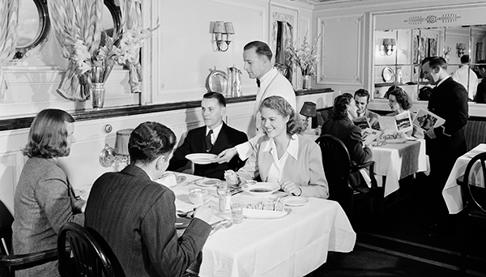
1929 Veteran west coast mariner Captain Edward Gillam dies on board the Princess Norah.
1929 Tofino Board of Trade established.
1929 Wingen’s shipyard opens on Tofino waterfront.
1931 Pageant commemorating the arrival of Captain Cook at Nootka is staged on Tonquin Beach in Tofino.
1932 Tofino incorporated as a municipality.
1935 Fish hatchery closes at Kennedy Lake.
1936 Tofino Hospital opens thanks to community fundraising efforts.
1937 Walter Dawley retires as Clayoquot postmaster after thirty-five years.
1930s Hazel and Jim Donahue begin to operate “Camp Maquinna” at Long Beach, welcoming visitors to camp or stay in cabins.
1936 Arthur and Helen Lovekin build their large “Lovekin Estate” on Long Beach, where they spent part of every year.
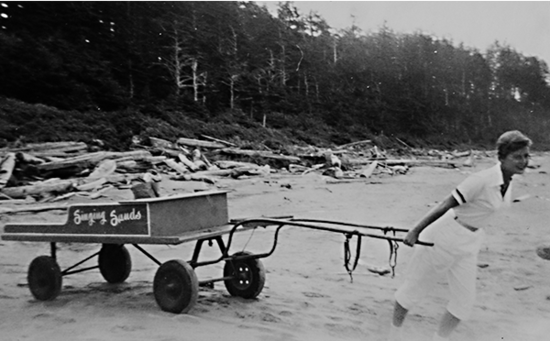
1937 Peg and Dick Whittington build guest cabins near their home on Long Beach at what is now the Green Point Campground, calling their place “Singing Sands.”
1939 The combined enrolment at Ahousaht residential school and Christie School reaches nearly 200 pupils, from villages up and down the coast.
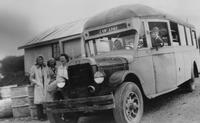
1940 Ahousaht residential school burns down, to be replaced by a day school.
1941 Estevan Point is shelled by a Japanese submarine.
1942 Betty Farmer purchases Stubbs Island, taking over the hotel, store, and bar at Clayoquot.
1942 All people of Japanese descent in Canada are declared enemy aliens and evacuated from the west coast; their fishboats are confiscated.
October 1942 RCAF Tofino air base officially opens.
1944 Speed limit of 15 miles per hour posted in Tofino Village.
1945 RCAF Canso plane #11007 crashes at the base of Radar Hill; all twelve passengers survive.
1946 Earthquake and tsunami hit the west coast.
1947 Resolution passed by the village of Tofino that “all orientals be excluded completely from the Municipality, and…prevented from owning property and carrying on business directly or indirectly within the Municipality.”
1948 The Crab Dock starts business in Tofino, canning crab on site, and later salmon and clams. The business, Tofino Packing, continued until 1964.
Late 1940s The Wickaninnish Lodge opens at the southern end of Long Beach, operated by Nellie and Joe Webb.
1952 Final voyage of the SS Princess Maquinna.
1952 Tofino Hospital burns down.
1953 Potlatch ban lifted.
1954 New Tofino Hospital opens.
1950s Combers Resort, operated by the Buckle family, opens at Long Beach. The Morae family build the resort called Long Beach Bungalows, next to the Wickaninnish Lodge.
1959 A gravel road connects Tofino and Ucluelet to Port Alberni. Locked gates at both ends restrict public access hours.
1959 Maquinna Hotel opens in Tofino.
1964 Alaska earthquake. Tsunami takes out Tofino’s water line, does considerable damage at Hot Springs Cove and Port Alberni.
July 1964 Robin Fells and Jeff Crawford open the original Wickaninnish Inn on Long Beach.
1964 Post office at Clayoquot permanently closed.
1964 Betty Farmer sells Clayoquot Hotel and Stubbs Island.
1964 Locked gates are removed and travel restrictions lifted on the road to Alberni.
1966 First surfing competition held at Wickaninnish Beach.
1967 BC-based whaling ends. Last whale processed at Coal Harbour.
1968–69 “Hippies” establish themselves at Wreck Bay (Florencia Bay).
1970 Pacific Rim National Park officially established. A 20-mile-per-hour speed limit is set on Long Beach.
1970 Prime Minister Pierre Trudeau surfs at Long Beach.
1971 Pacific Rim National Park officially dedicated by Princess Anne. Two thousand people attend the ceremonies.
1971–75 Residences and commercial buildings removed from the new Pacific Rim National Park. Many homes and businesses are expropriated.
1971–76 Jim and Carolyn Hudnall operate sea lion and whale-watching tours from Long Beach.
1971 New Christie School Residence opens in Tofino. Christie School on Meares Island closes.
1971 Herring roe fishery frenzy starts on west coast with Japanese roe buyers throwing money around like confetti.
1972 Opening of Wickaninnish School in Tofino.
1972 Road paving completed between Port Alberni and the west coast.
1972 Herring processing plant opens in Tofino.
1973 People arrive by the thousands on the newly paved road. Easter weekend finds 1,700 groups camping on the beaches. May long weekend sees some 10,000 people camped on Long Beach.
1973I Heard the Owl Call My Name filmed at Ahousaht, starring Tom Courtenay.
1973 Jim Hudnall and Bruce Atkey begin renting surfboards at Long Beach.
1974 Ka Ka Wis Family Development Centre established at old Christie School on Meares Island.
1974–80 The Gust o’ Wind Arts Centre and coffee shop provides space for young newcomers and artisans.
1975 All beaches within Pacific Rim National Park closed to camping and cars.
1976 Maureen Fraser opens the Common Loaf Bakery, famed for its cinnamon buns.
1979 The name “Nuu-chah-nulth Tribal Council” is adopted by the West Coast District Society of Indian Chiefs, formerly the West Coast Allied Tribes (est. 1958). The NTC represents fourteen First Nations on the coast, including the Ahousaht, Tla-o-qui-aht, and Hesquiaht.
1979 Friends of Clayoquot Sound formed.
1982 Jamie’s Whaling Station begins offering whale-watching tours.
1982 Tofino Village becomes District of Tofino, with its boundaries extended.
1983 Dick Close opens Weigh West Marina catering to sport fishing enthusiasts.
April 1984 At the Meares Island Easter Festival, Tla-o-qui-aht chief councillor Moses Martin declares Meares Island a Tribal Park.
November 1984 Meares Island blockade at Heelboom Bay (C’is-a-quis Bay).
1984 Liz Zed opens Tofino’s first surf shop, Live to Surf.
March 1985 The BC Court of Appeal issues an injunction freezing all logging on Meares Island.
1985 First fish farm opens in Clayoquot Sound, in Irving Cove, Tofino Inlet.
1986 Maaqtusiis School opens at Ahousaht.
1988 Protests at Sulphur Passage attempt to stop Fletcher Challenge logging in Shelter Inlet. Of the thirty-five people arrested, twenty served jail sentences.
December 1989 Oil from the Nestucca oil spill off the Washington State coast arrives on beaches near Tofino, leading to a massive cleanup.
1991 Protests against logging in Clayoquot Sound escalate. Kennedy River Bridge is burned, throwing 210 loggers temporarily out of work.
1991 Bulson Creek logging protests lead to further arrests.
1993 Middle Beach Lodge opens.
April 1993 Premier Mike Harcourt announces the Clayoquot Land Use Decision. This pleases no one and protests continue to escalate.
July 1, 1993 Clayoquot Peace Camp opens at the “Black Hole” clear-cut near the highway. Daily blockades and arrests begin at the Kennedy River Bridge.
July 1993 Australian band Midnight Oil plays concert to 5,000 people at the “Black Hole.”
August 9, 1993 Largest mass arrest in Canadian history, with 309 people arrested at the Kennedy River Bridge.
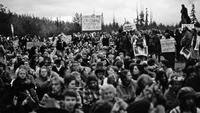
August 1993 Mass trials of Clayoquot protesters begin in Victoria.
October 9, 1993 Peace Camp closes.
February 1994 Stephen Owen releases his CORE report protecting many wilderness areas from logging and recommending significant changes to forestry practices.
March 1994 Ten to twelve thousand forestry workers hold huge rally in Victoria protesting CORE report.
1996 Charles and Howard McDiarmid open the new Wickaninnish Inn on Chesterman Beach.
1997 Tofino Community Hall demolished.
1997 The Tofino Mudflats, officially named the Tofino Wah-nah-jus Hilth-hoo-is Mudflats, are designated a Wildlife Management Area.
1998 Iisaak Forest Resources Ltd. assumes the timber licences once held by MacMillan Bloedel in Clayoquot Sound.
Late 1990s Properties on Chesterman Beach reach the million-dollar mark.
1999 Surf Sister Surf School opens.
2000 Clayoquot Sound receives United Nations Biosphere Reserve status.
2000 Clayoquot Wilderness Resort opens at Bedwell River.
2001 In downtown Tofino, two protesters live for twenty-eight days in the 800-year-old “Eik Tree” to protest its removal. Saved from the chainsaw, the tree is now supported by a steel brace.
2002 Long Beach Lodge opens in Cox Bay.
2004 Tofino voters turn down referendum to upgrade the town’s water system.
2006 On Labour Day weekend, a water crisis forces the mayor to impose severe water restrictions, threatening closure of all hotels.
2008 Truth and Reconciliation Commission receives a five-year mandate to investigate abuses in residential schools.
2008 Prime Minister Stephen Harper issues a formal apology to students who attended residential schools across Canada.
2009 Ahousaht hereditary chief Shawn Atleo elected national chief of the Assembly of First Nations.
2009 Tofino’s Peter DeVries wins the O’Neill Cold Water Classic surfing competition at North Chesterman beach.

2009 Surf Sister co-sponsors first “Queen of the Peak” surfing competition for women and girls.
2011 Ty-Histanis First Nations village is constructed near Long Beach.
2011 High school opens at Maaqtusiis, run by the Ahousaht Education Authority.
2012 Tla-o-qui-aht and Ahousaht reach an “Agreement in Principle,” Stage 4 of treaty negotiations.
2014 The Supreme Court of Canada rules that the Tla-o-qui-aht and Ahousaht have the right to catch and sell all species of fish within their territory.
